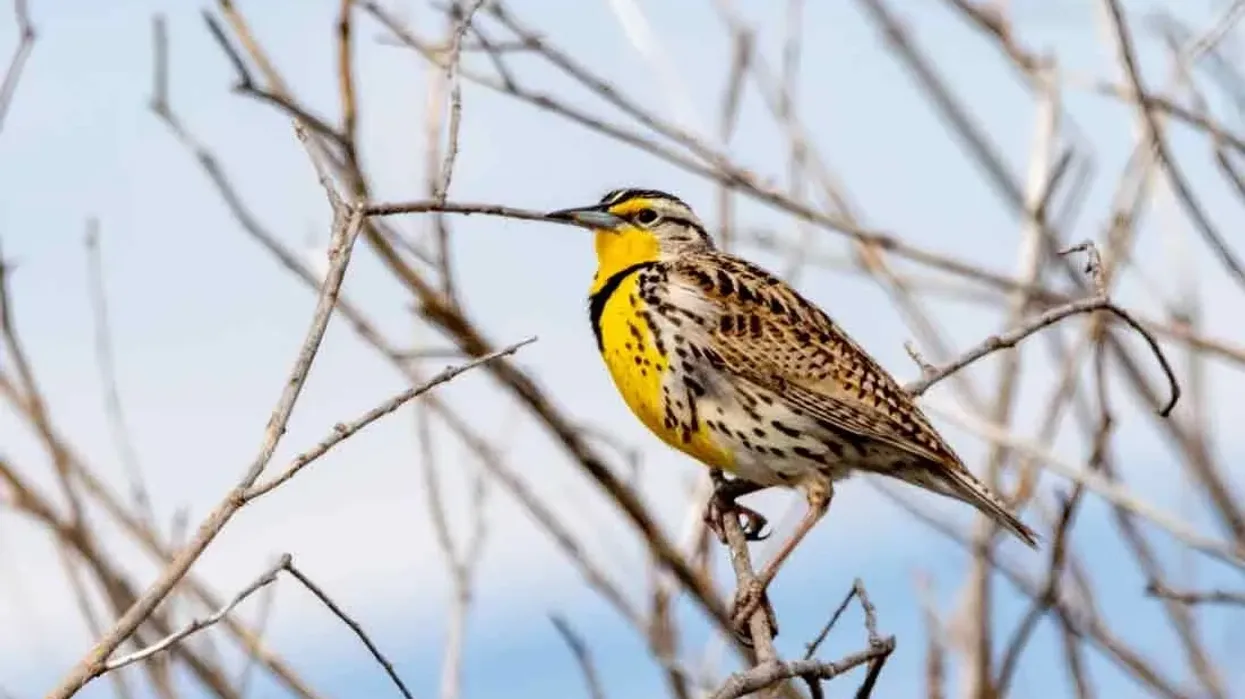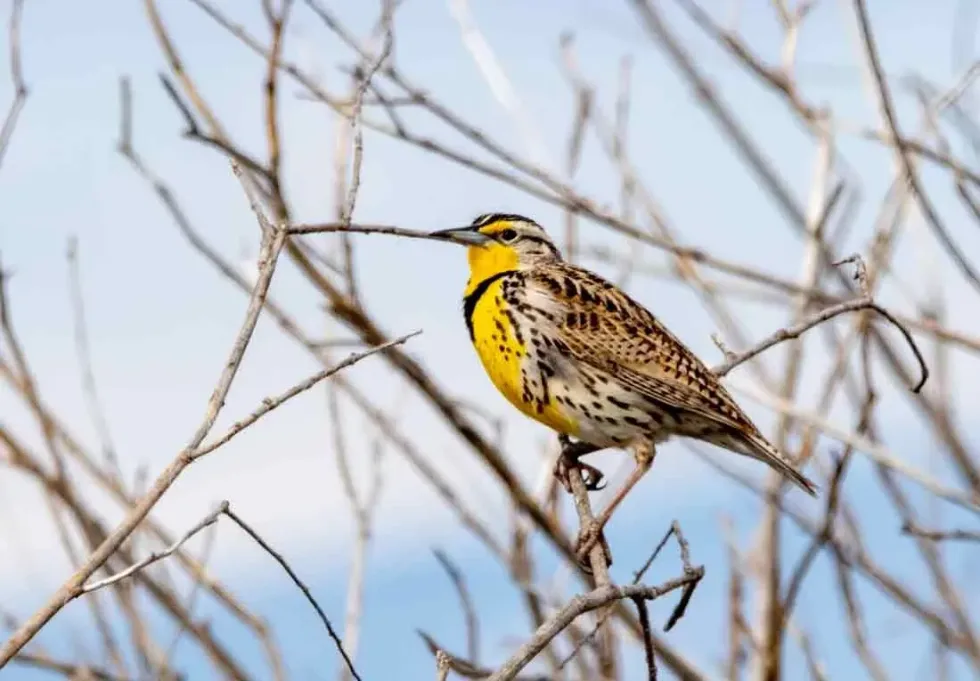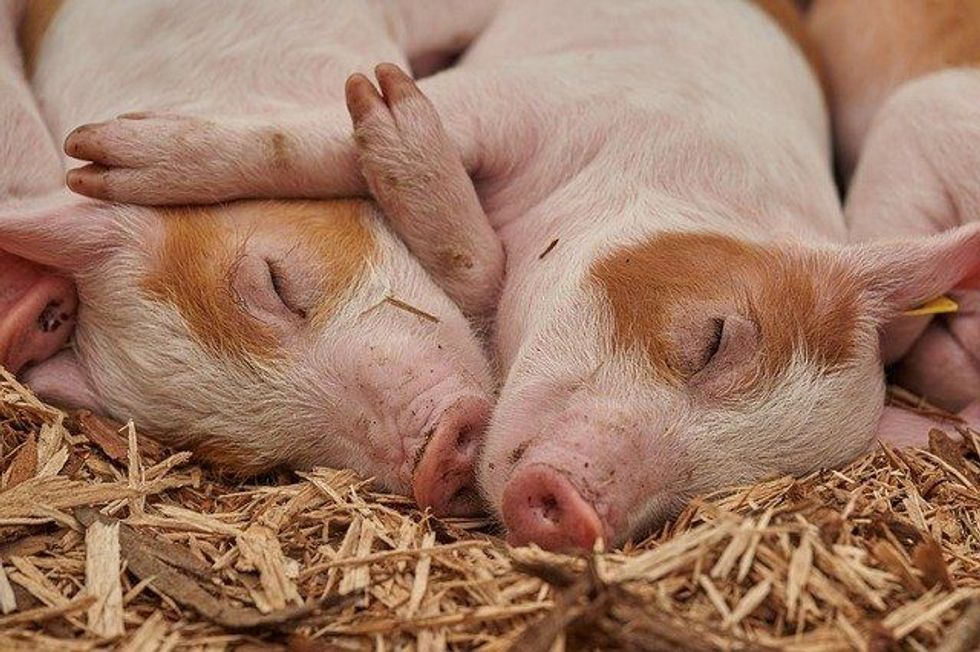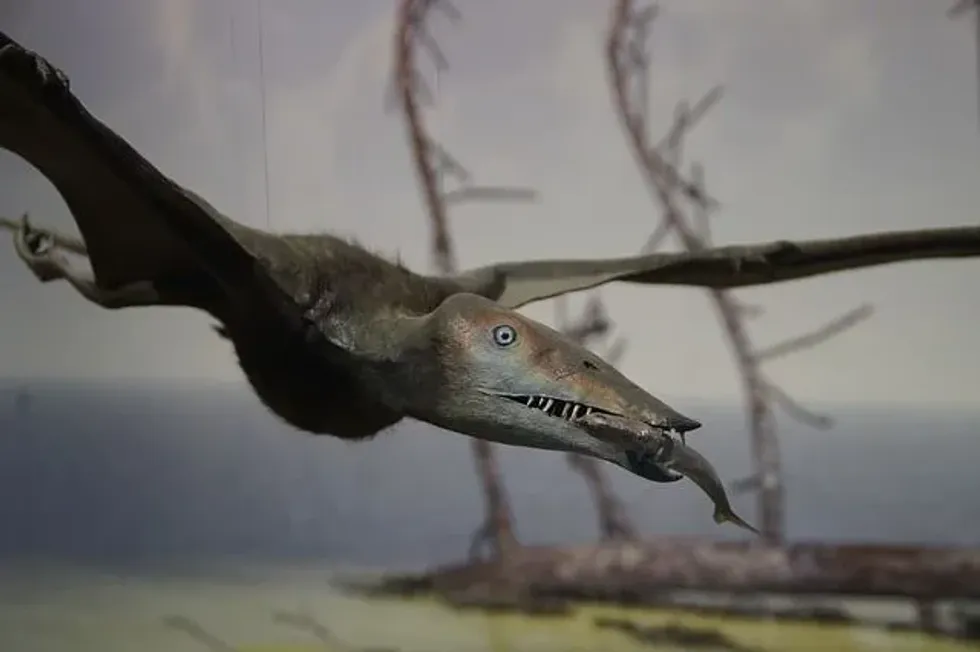Western Meadowlark (Sturnella neglecta) is a medium-sized North American bird that belongs to the order Passeriformes, family Icteridae. Their scientific name Neglecta, which is a Latin word that means overlooked, ignored, or neglected.
The Western Meadowlark nest is always bred by the female bird on a breeding ground, hidden neatly with leaves and bushes. The nest is made so that there is always a runway area in front of the entrance.
The young one receives care from its family for two weeks after the eggs hatch. The male bird leaves the nest and brings food while the female one feeds the young birds. The feeding behavior of a female Western Meadowlark is unique and this is called the gaping process.
The Western Meadowlark sound and its song are very famous in the western region of America. Native people love their song sounds, and scientists often call them Thunderchunks because their song is said to be as loud as thunder.
We've collected many interesting facts about the Western Meadowlark for everyone to enjoy. Let's look at some interesting Western Meadowlark facts, and if you like these, do also read our secretary bird and stork facts.
Western Meadowlark Interesting Facts
What type of animal is a Western meadowlark?
A Western Meadowlark is a medium-sized bird that is easily identified by its yellow chest and black-colored crescent.
What class of animal do Western meadowlarks belong to?
Western Meadowlarks are a species of North American bird that belongs to the Aves class. These birds are colorful medium size birds who are also known as New World Blackbirds.
How many Western meadowlarks are there in the world?
The exact population of the Western meadowlarks is unknown, but their conservation status is listed as Least Concern which means there are enough meadowlarks in the world to assume that they are safe. There are two species of these yellow breast birds that are found in the world, mainly in North America.
They are Western Meadowlark (Sturnella neglecta) and Eastern Meadowlark (Sturnella magna).
Where does a Western meadowlark live?
The Western Meadowlark is a North American bird that is found in the western regions of America. These species of birds are found in the Fields, open grasslands, meadows, and open habitats regions of America.
What is a Western meadowlark's habitat?
The Western Meadowlark habitat consists of areas like grasslands, fields, and meadows or condoned fields. These birds make their nest on the ground and covered them cleanly with a roof woven from grass. They stay in one territory of their habitat for their whole life and don't migrate like northern birds.
Who do Western meadowlarks live with?
Western Meadowlarks always stay in groups. The group can be of different species like starlings or blackbirds. The Western Meadowlark does not interact or interbreed with the Eastern Meadowlark, and they also defend territories against each other. Sometimes their regions or territories may overlap with each other, but they try to avoid other species as much as they can.
How long does a Western meadowlark live?
The average lifespan of a Western Meadowlark bird is around ten years. If these birds are not killed by their predators like fox, hawks, cats, coyotes, or dogs, they end up living up to 10-12 years of age.
How do they reproduce?
The breeding period of Western Meadowlark starts from the late spring season to the late summer season. The two couples come together and mate.
After the mating process is finished, the female Western Meadowlark builds a nest on the breeding ground, and the nest is always hidden behind the leaves and grass. Western Meadowlark eggs are always laid in intervals and not together at once.
The incubation period of the eggs is 13-15 days, and the female starts the incubation after the last egg is laid in the nest.
What is their conservation status?
The Western Meadowlark, the North American birds, have the status of 'Least Concern' set by The International Union for Conservation of Nature. This means they are not close to being endangered and are safe in the world. These birds are good at hiding, and they live up to 10-12 years which is adequate as their population is consistent.
Western Meadowlark Fun Facts
What do Western meadowlarks look like?
Western Meadowlarks are colorful birds that have a yellow lower body, also called yellow underparts, with a black V-shape on the chest. They have white flank feathers streaked in black and long, sharp, pointed bills with their heads having black and brown bands.
How cute are they?
Western Meadowlark state bird is one of the cutest medium-sized birds with different colors of feathers on its body. It also has yellow-colored underparts with brown and black bands that give this bird a cute, unique, and attractive look.
How do they communicate?
The communications performed by a Western Meadowlark are similar to other birds as they make varieties of calls and sing songs. They also communicate with their body language. The Western Meadowlark song is very famous in the western range of America.
How big is a Western meadowlark?
The average length of Western Meadowlarks is 6.3-10.2 in (16-26 cm) long and 8 in (22 cm) tall. These species of birds are five times smaller than the cat.
How fast can a Western meadowlark fly?
There is no estimated speed of a Western Meadowlark range in flying. Hence, it is not mentioned. But when these birds are flushed, they fly on the low level with flapping their short wingbeats.
How much does a Western meadowlark weigh?
The weight of Western Meadowlarks is 3.1-4.1 oz (89-115 gm).
What are their male and female names of the species?
There is no set name for the male and female species of the Western Meadowlark.
What would you call a baby Western meadowlark?
There is no particular name for a baby Western meadowlark. They can simply be called 'chicks'.
When the young Western Meadowlark chick is born, it is underdeveloped and goes on to develop after its mother comes to its aid. The young are born naked with no feathers on them, and their eyes open after the fourth day of their birth. The mother Western Meadowlark's feeding behavior is called gaping.
The process called gaping is where they use their unusually strong muscles to help them open the chick's bill. When the young are old enough to survive on their own, they leave the nest.
What do they eat?
A Western Meadowlark diet consists of bugs and other small animals, but as they are omnivores, they also eat plants and fruits like berries and seeds. These birds find their food by digging with their bills, and they often eat with their flocks in the winter season.
Are they aggressive?
Although the Western Meadowlark is not aggressive in nature, they can be aggressive at times when fighting with each other. They claw and thrash their wings while jabbing with their bills when they are fighting, and it is often a brutal sight. But these birds haven't shown any signs of aggressive behavior towards humans.
Would they make a good pet?
Whether they can be good pets or not is subjective, but these birds are not aggressive towards humans, so they can be kept as pets.
Did you know...
The Western Meadowlark call is loud, these boisterous birds have earned the monicker 'Thunderchunks'.
Mr. John James Audubon, an American ornithologist, is the person who gave the Western Meadowlark its scientific name, Sturnella neglecta. He claimed that these birds that are so common in the western regions are severely neglected for this very reason.
Eastern vs. Western Meadowlark
Regarding family debates pitting the Eastern Meadowlark vs. Western Meadowlark, the clearest difference is that the Western Meadowlark has yellow color underparts extended till its face and beak while the Eastern one does not.
The eastern birds are found in the eastern regions of America, while the Western Meadowlarks are found in the western regions.
The Western Meadowlark is the state bird of which state?
The Western Meadowlark is the state bird of six states, namely North Dakota, Kansas, Nebraska, Oregon, Montana, and Wyoming.
Here at Kidadl, we have carefully created lots of interesting family-friendly animal facts for everyone to discover! Learn more about some other birds including shoebill, or great green macaw.
You can even occupy yourself at home by drawing one on our Western Meadowlark coloring pages










